 |
 |
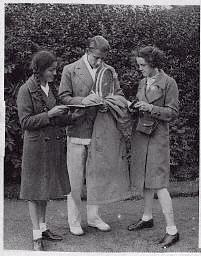
Austin signing autographs for two female admirers |
Austin (UK) (1906-2000) |
| Bunny
Austin unfortunately goes into the annals of the grand slam as one of the
great players NOT to have won in any of the three catagories, singles,
mens or mixed doubles. Twice finalist at Wimbledon, he only managed to
win a total of ten games across these two matches: he was unfortunate to
have come up against two players at the very peak of their game, Ellsworth
Vines
in 1932 and then Donald Budge in
1938. His luck was no better against the German Henkel at Roland-Garros
in 1937...
Bunny did however prove to be a remarkable player in the Davis Cup, winning practically all of his matches between 1933 and 1936 and brilliantly supporting the great British champion Fred Perry. Over this period the British team initially wrestled the Cup from France, then holders for some 6 years, and went on to successfully defend in challenge rounds against the USA and Australia for the next 3 years. Austin scored accomplished victories over Budge, Crawford and Von Cramm. These victories amply demonstrated his status at the top of the sport and his ability to produce a strong quality of play when it mattered in decisive matches. |
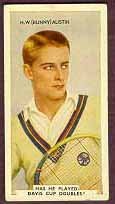 |
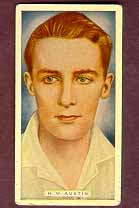 |
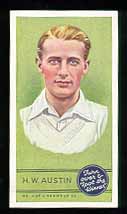 |
 |
Bunny will particularly
go down in history as the player who introduced playing in shorts rather
than long trousers, see le
short dans le tennis. Today's modern tennismen therefore have this
most likeable of English champions to thank for having dared to be the
very first person to break with one of the most sacrosanct laws of the
Wimbledon establishment and present himself dressed in such a way in front
of the Queen!
He didn't decide to take such a large step forward in the etiquette of the game without some initial preparation. He innovatively first played in shorts at Forest Hills in 1932. Wimbledon, of course, was something else. Queen Mary, whilst a passionate follower of the game, was renowned as a bastion of conservatism. Female players of the time, strictly obliged to wear heavy stockings throughout the twenties, were well aware of this... |
| Bunny
Austin produced his shorts in front of the Queen in 1933. As it turned
out, everything went rather well. There was at first a cold silence lasting
several minutes, but then the Queen settled down to watch the match and
stayed until the end. A good example of a good natured and friendly revolution!
Progressively, everybody, across the world followed suite.....thankfully. It is in fact now difficult to understand how all of the great champions were able to play for such a long time in long trousers, something we simply wouldn't accept today... However the transition wasn't overnight; practically all of the great players without exception continued to play on in long trousers until 1939: Perry, van Cramm, Budge, Riggs... |
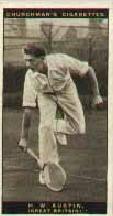 |
| Forever in advance of his time, Bunny Austin was also the inventor of a curious tennis racket that had a handle comprising three segments. He used this racket with success throughout his career. He was therefore also the first tennis player to realise that materiels could be used to improve a player's performance. His invention was aerodynamically designed such as to both reduce air resistance and facilitate the player's hand movement. The sport clearly wasn't ready for such technological advances during this era and none of his contempories picked up on the idea. In fact, the invention was quickly forgotten after he stopped playing. However, his ideas were a strong precurser of times to come since wooden rackets would ultimately be replaced by metal and then, more latterly, by composite materials. We are also today quite used to the application of optimised aerodynamic racket heads...etc. | 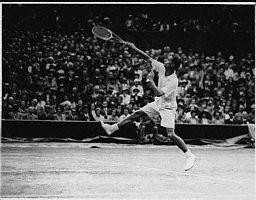
Austin with his 3 segmented racket at Wimbledon in 1938 |
Des idées, des remarques, des suggestions? E-mail
E-mail
Dernière mise à jour : 10
avril 2010
Copyright BLANCHE NET communications.
Avril 2010.
.